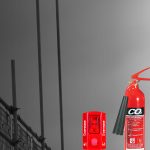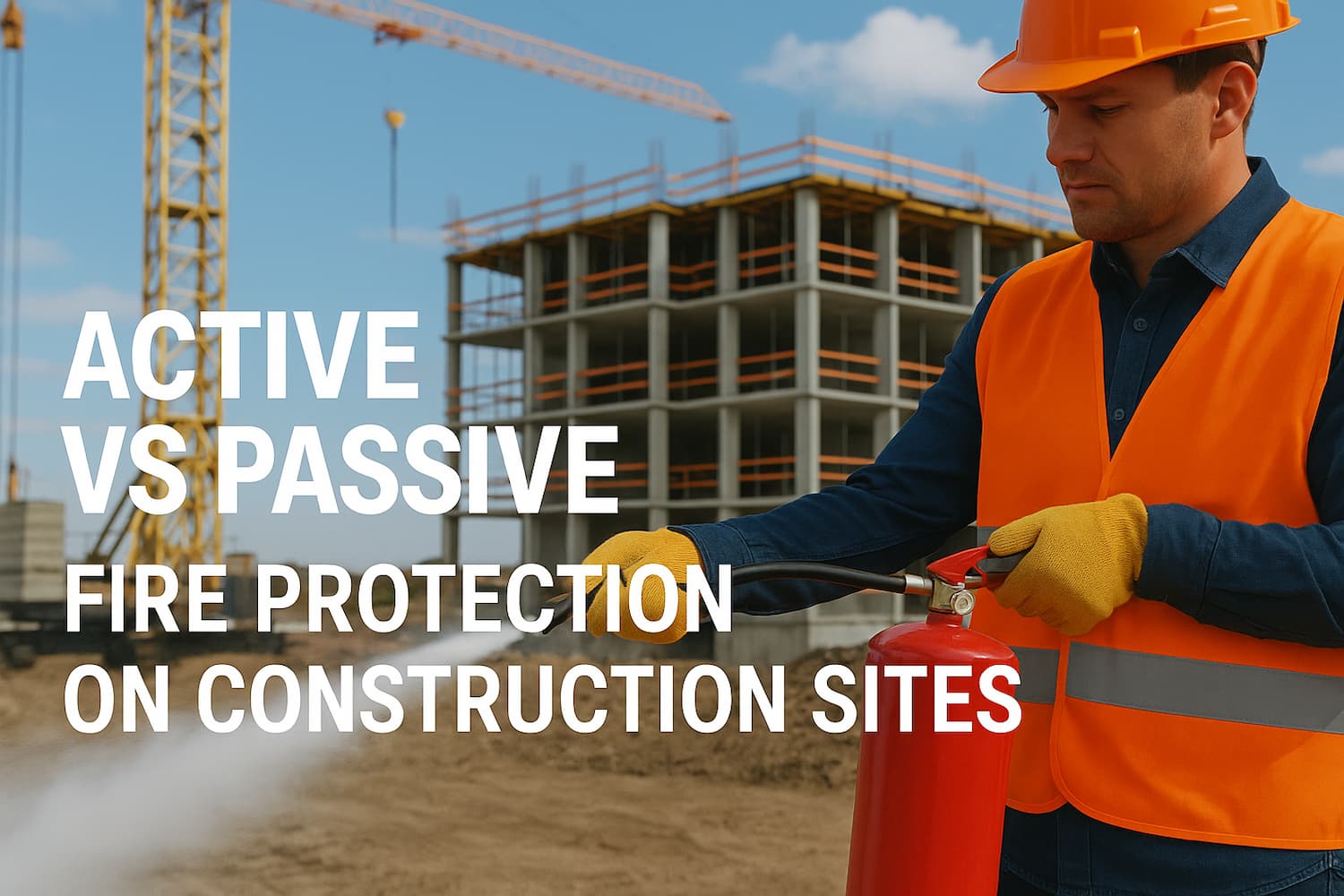

Understanding the difference between active and passive fire protection systems and implementing both on a construction site is essential to protecting lives, infrastructure, and timelines.
At Defender, we support a comprehensive fire safety strategy that includes both active fire protection and passive fire protection. Let’s break down the key components and explore how to integrate them effectively on your site.
Active fire protection (AFP) includes systems that require motion or power to function — either automatically or through manual activation. These systems detect and fight fires in real-time.
Examples of Active Fire Safety Measures:
These technologies form the first line of defence when a fire breaks out. Defender’s temporary fire alarm systems are an excellent choice for enhancing safety and operational efficiency on construction sites. Designed for easy setup, operation, and maintenance, the wireless system meets diverse needs. For smaller locations, the Press & Evacuate stand-alone fire alarm is perfect, while the Defender’s Polaris range excels on medium to large sites, as clients can select up to 250 units to connect.
Polaris serves as a powerful communication tool, quickly alerting teams to any hazards or emergencies through a network of interconnected devices. With features like 100% recycled casing, cloud-based monitoring for real-time updates, and FIREFLY technology for visibility in low light, these systems prioritise safety and sustainability. The Wireless Mesh Radio Technology ensures that the system remains functional, even if one component gets damaged. Defender alarms provide reliable protection and peace of mind, making them a smart investment for any organisation focused on safety.
Active systems are dynamic and responsive, providing real-time intervention when fire is detected.
Passive fire protection (PFP) refers to the built-in fire safety systems designed to contain fires or slow their spread without human intervention. These systems are integrated into the structure during construction and are always “on,” offering a quiet but vital layer of defence.
Examples of Passive Fire Protection Systems:
Passive fire stopping plays a crucial role in sealing service penetrations (e.g., pipes, cables, ducts) through fire-rated walls and floors. If these gaps are not properly sealed, fire and smoke can travel unchecked through a building’s compartments.
Whether it’s fire-resistant walls or a simple passive fire control sealant, passive protection systems work silently to contain fire and preserve structural integrity.
Construction sites are particularly vulnerable to fire ignitions due to their:
By combining passive protection systems with active fire safety measures, you create a layered defence strategy. While active systems suppress or alert, passive fire safety buys crucial time by slowing fire spread and preserving escape routes.
1. Integrate Passive Fire Protection Early
Design fire compartments and passive fire stopping details at the planning stage.
2. Conduct Routine Fire Risk Assessments
Evaluate new hazards as work progresses.
3. Use Certified Materials and Installers
All fire passive products must meet UK building regs (e.g. BS 476, EN 1366).
4. Maintain and Test Active Alarm Systems
Regularly test alarms, detectors, and fire-fighting equipment.
5. Train All Workers
Fire awareness should include both active and passive fire protocols.
Fire safety on construction sites isn’t optional; it’s a legal and moral imperative. A successful fire strategy doesn’t rely on one system over another. Instead, it combines the silent strength of passive fire control with the responsiveness of active fire protection.
Need help selecting your active fire protection for the site? Contact Defender today for guidance and support.

